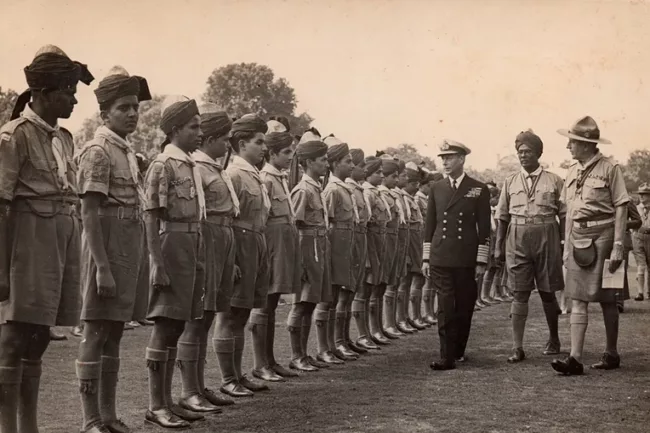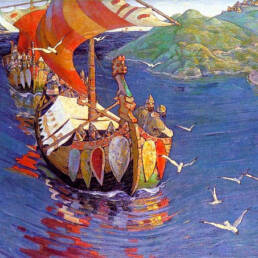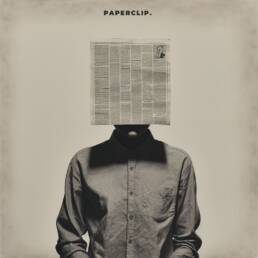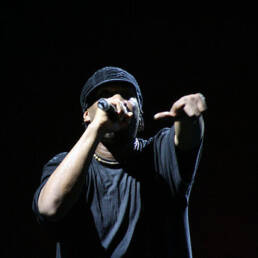When an Indian boy gave his green turban to stitch the Pakistani flag
In the vastly complex political landscape of India and Pakistan, there is an obscure story of an unforgettable day in 1947, when a group of young boys, from the twin nations, unfurled their national flags in the most bizarre of circumstances.
Before delving into this gripping account, one must understand the meaning and importance of Jamboree. Jamboree is a word with a fairly complex etymology[note 1]. Based on the most popular belief, it traces its root to the Swahili word Jumbo, meaning Hello. In the world of Scouting, “a Jamboree is a large gathering of Scouts, at a national or international level”. The Scouting program garnered global fame after Robert Baden-Powell founded it in 1908[1]. The first World Scout Jamboree was held in 1920 in the United Kingdom and the latest 24th edition was celebrated in West Virginia in 2019.
The sixth World Scout Jamboree was held in 1947 and was hosted by France at Moisson, a village on the outskirts of Paris. It was a retired shooting range of the World War II era, located on the bank of Seine. This was the first Jamboree held after the devastating World War II and was aptly named the Jamboree of Peace (Jamboree Mondial de la Paix) [2].
The Boy Scout movement had already gained momentum across undivided British India by then. After 1911, the program was opened for native Indians and had started gaining prominence in Calcutta, Mysore, Jabalpur, Allahabad, Shimla, and Madras. In the province of Western Punjab, the Scouting program was introduced in the towns of Lahore and Ghora Gali. For the Jamboree Mondial de la Paix in 1947, 165 Boy Scouts were selected from all parts of undivided India with Dhanmal Mathur of Mayo College as the Scoutmaster, to be led by G.J.J. Thadeus, a staunch Christian from Kerala [3].
The group of youngsters embarked upon their voyage from Bombay to Paris via Southampton on a ship named SS Alkantara. It took them 18 days to reach England via the Suez Canal. The boys experienced massive sea-sickness. They struggled with sleeping, walking around, and even eating, as most of the food on the ship had beef in it. The Hindus would not eat it, and the Muslim boys too rejected the food in solidarity. After enduring all of this, the boys eventually reached Moisson[4].
It was a true amalgamation of cultures of the world. About 40,000 Scouts[5] from 24 different nations joined the opening ceremony on August 9, 1947, six days before India gained independence. The first week went by celebrating brotherhood, but things changed suddenly when the camp received the news of India’s independence and the resultant partition.

It was August 15, 1947. The uncertain Boy Scouts realized that they did not belong to the same nation anymore. Scoutmasters of the respective groups decided to hoist two different flags representing the separate nations with the Scout flag in the middle. The Indian High Commission of London sent them boxes of sweets to celebrate the independence with an Indian tricolour flag[5]. Unfortunately, there was no Pakistani flag available, as it was only on August 11, 1947 that the Constituent Assembly of Pakistan approved the design of the Pakistan national flag[6]. The Muslim Boy Scouts of Pakistan had only seen a picture of the proposed Pakistani flag in a local newspaper. Meanwhile, Kurushid Abbas Gardezi, the boy from Multan, and his Scout Iqbal Qureshi, along with the Punjab and Rajasthan contingent, were given the task of arranging the Pakistani flag, a day before the flag hoisting ceremony. These boys then came up with a brilliant idea![7]
Gardezi tore his white shirt and Madan Mohan, an Indian boy from Shimla, offered his green turban[note 2] to provide the fabric for the flag of Pakistan. Two French Girl Guides stitched the fabrics together all night, and what they produced was the handmade Pakistani flag Parcam-i sitārah o-hilāl or the flag of the crescent and star[8]. While back home at about the same time, the Indian subcontinent was witnessing the largest and most traumatic human migration in world history with people from the two religions mass-murdering each other. In this backdrop, the story of a Pakistani flag made from an Indian boy’s green turban bears special significance.
It was a riveting historic moment. Gardezi, Qureshi, and their young friends were the first ones to raise the Pakistan flag on foreign soil, far away from their homeland, on the day of liberation. During the flag hoisting ceremony, the Indians sang ‘Jana Gana Mana’ as their national anthem, but Pakistan was yet to decide on theirs, so all the Boy Scouts decided to sing ‘Saare Jahan Se Achcha’[9][note 3]. That remarkable day witnessed for the first time, the two independent dominions, India and Pakistan, unfurling the two new flags one beside another, at an international gathering.
The Boy Scouts soon after started their 16-days-long return voyage to Bombay on RMS Strathmore, the historic ship that carried Don Bradman’s Australia team to England for the Ashes in 1938. It is the same ship that took the 1936 Olympics Gold Medalist, Dhyan Chand, and the Indian Hockey Team home from Berlin, accompanied by the Nawab of Pataudi and Maharajkumar of Vizianagaram[10]. This was no ordinary journey either! All the Scouts, who had travelled to Paris as the residents of one nation, were returning as the citizens of two separate countries.
The situation was grave. They heard the news of partition and the ongoing violence in the name of religion back home. Thadius, fearing violence on board the ship, advised the boys to guard the deck in turns to ensure nobody is pushed into the water. The sleepless and frightening journey came to an end when the Strathmore docked at the port of Bombay. Back then, Bombay was burning with religious tension and riots. The Boy Scouts bid farewell to each other and the officials escorted the Muslim boys to Lahore and Karachi[11].
For some of them, the world had turned upside down in a matter of a few weeks. Swaran Singh, a Punjabi boy from an opulent family of Western Punjab, was one of the unfortunate boys. He came back only to find his parents waiting homeless at a railway station[12]. Aftab, a Muslim boy from Ajmer, stayed on in India on a quest to find his parents. His Hindu friends accompanied Aftab, gave him a Hindu name, hid him in a first-class train compartment, protected him from the rioting mob and escorted him to his parents in Ajmer[13].
The 1947 World Jamboree was a historic journey of smiles, tears, and symphony. The boys returned home unharmed. Ranbir Singh of the Rajasthan contingent grew up to be a celebrated polymath. His fellow compatriot Jasdev Singh became a popular commentator for Doordarshan[note 4] and All India Radio. Later in life, he covered nine Olympics, and was also the iconic voice for India’s Republic Day parade[14]. Pakistan Boy Scouts Association honoured Kurushid Abbas Gardezi by presenting him with the Lifetime Achievement Award[15].
The future, however, was a stark contrast for a few; perhaps a grieving testimony of the hostile future of the two nations. One of the Boy Scouts from India at the Jamboree was Colonel Narendra Kumar (also known as the Bull), a famous mountaineer who climbed the Himalayas and the Karakorams. He was also an Indian soldier, who played a key role in Operation Meghdoot to reclaim the Siachen glacier in 1984. Sarfaraz Ahmed Rafiqui, on the other hand, was Colonel Narendra’s good friend who had hoisted the Jamboree Organization flag in 1947, and later joined the Pakistan Air Force. During a siege of IAF Halwara Air Base in 1965, he made the supreme personal sacrifice.[16][17].
The Hindu and Muslim youngster, who together unfurled the flags of two new dominions for the first time on a foreign soil, could barely imagine that it was only the beginning of a bloodthirsty rivalry for the years to come! More importantly, this unusual story has faded into oblivion.
Notes
- Etymology is the study of the history and origin of words.
- A turban is a type of customary headwear by people of various cultures with prominent traditions found in the Indian subcontinent and Southeast Asia. Wearing turbans is common among Sikhs in the Indian subcontinent serving as a religious observance.
- “Sare Jahan se Accha” , (Translation: Better than the entire world, is our Hindustan,”), is an Urdu language patriotic song written by poet Muhammad Iqbal.
- Doordarshan is an autonomous, public service broadcasting organization founded by the Government of India established in 1959, providing digital television service across India.
References
[1] WARREN, ALLEN. 1986. “Sir Robert Baden-Powell, the Scout movement and citizen training in Great Britain, 1900–1920.” The English Historical Review CI, no. CCCXCIX (April): 376–398. https://doi.org/10.1093/ehr/CI.CCCXCIX.376.
[2][5] The Guardian. 2014. “16 August 1947: The world in miniature: 40,000 Scouts.” The Guardian. https://www.theguardian.com/theguardian/2014/aug/16/archive-1947-40000-boy-scouts.
[3][4][11][13] Sinh, Ranbir. 2019. “Jamboree de La Paix (Jamboree of the Peace).” India of the Past. http://www.indiaofthepast.org/ranbir-sinh/life-back-then/jamboree-de-la-paix-jamboree-peace.
[5][9] The Canadian Parvasi. 2017. “How a Sikh boy scout gave his turban to create Pakistani flag.” The Canadian Parvasi, August 11, 2017, 1. www.canadianparvasi.com.
[6] Dawn. 2011. “Facts about the Pakistan flag.” Dawn, August 12, 2011. https://www.dawn.com/news/651351/facts-about-the-pakistan-flag.
[7][15] World Scouting. 2011. “Veteran Pakistani Scouter Gardezi honoured with Lifetime Achievement Award.” World Scouting. https://www.scout.org/ar/node/5524.
[8] Jafari, Aqeel A. 2010. Pakistan Chronicle. Karachi: Virsa Fazli Sons.
[9] Scroll. 2017. “Dhyan Chand on chasing Olympic glory, being snubbed and meeting Don Bradman.” Scroll.in. https://scroll.in/field/848876/dhyan-chand-on-chasing-olympic-glory-being-snubbed-and-meeting-don-bradman.
[12][16] Col N Kumar, N N Bhatia. 2016. Soldier Mountaineer: The Colonel who got Siachen Glacier for India. Delhi: Vij Books India Pvt Ltd.
[14] Bhandari, Prakash. 2018. “Not just India, Jasdev Singh was equally popular in Pakistan.” Times of India, September 26, 2018. https://timesofindia.indiatimes.com/sports/off-the-field/not-just-india-jasdev-singh-was-equally-popular-in-pakistan-also/articleshow/65961594.cms
[17] Dispatch News Desk. 2020. “Squadron Leader Sarfaraz Ahmed Rafiqui— A fighter whose courage made his enemies to salute his dead body.” Dispatch News Desk. https://dnd.com.pk/glorious-history-of-pakistan-air-force-squadron-leader-sarfaraz-ahmed-rafiqui/182788.








